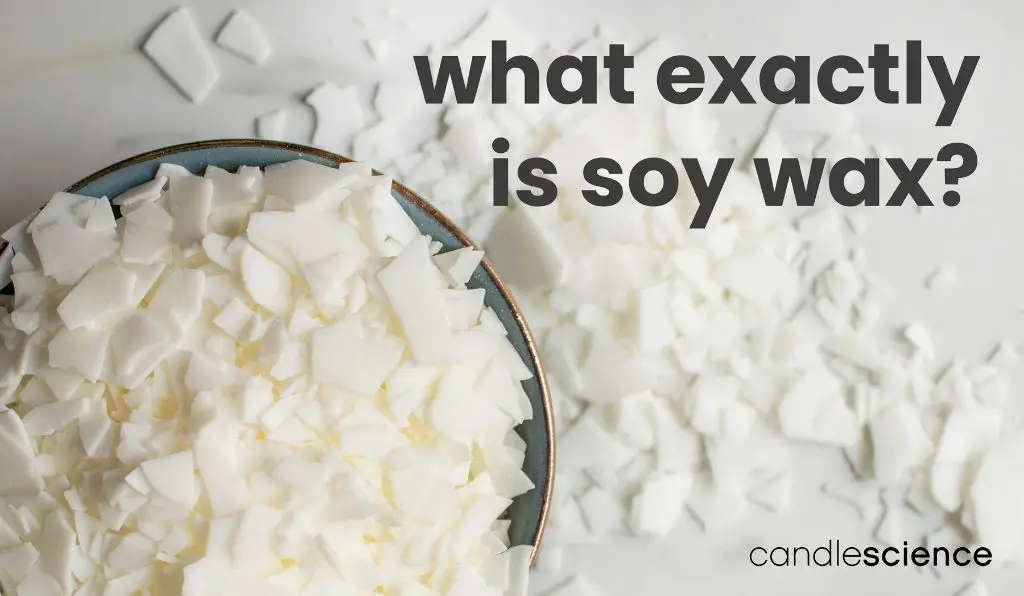Should I Use Paraffin Or Soy Wax For Candles?
Candle making is a popular hobby and small business for many people. When making candles, one of the most important decisions is which type of wax to use. The two most common options are paraffin wax and soy wax. Paraffin wax is a petroleum-based wax, while soy wax is made from soybean oil. Both have their own sets of pros and cons to consider.
This article provides an overview of paraffin and soy waxes for candle making. We will explore the characteristics, benefits, and drawbacks of each type of candle wax. Understanding the differences between paraffin and soy waxes will help you determine which is the best option for your specific candle making needs and preferences.
What is Paraffin Wax?
Paraffin wax is a soft, colorless or white wax made from saturated hydrocarbons obtained from petroleum. It is produced through the process of distilling crude oil and is considered a by-product of petroleum refining1. The name “paraffin” comes from the Latin words “parum” meaning little and “affinis” meaning affinity, referring to paraffin’s lack of reactivity. It is composed of straight chain alkanes such as C20H42 to C40H82.
Paraffin wax is commonly used in beauty treatments, candles, art materials like crayons, and as a lubricant. It has a melting point between 47°C and 64°C (116-148°F) and begins to enter a liquid state as it is warmed. Paraffin wax is odorless and chemically unreactive, making it useful for many applications. It helps soften and moisturize skin and is sometimes used in spa treatments or to relieve joint stiffness and arthritis pain when applied as a warm paraffin wax bath.
Pros of Paraffin Wax
Paraffin wax has some advantages that make it a popular choice for candle making:
It burns longer and brighter than other waxes like soy wax. The paraffin wax molecules are heavier, allowing the wax to burn slower and provide a stronger flame. This gives paraffin candles excellent burn times, often burning over 50% longer than soy wax candles.
Paraffin wax also has a very wide melting point range, from 46–68°C. This broad plasticity range makes it easy to work with. The wax can hold shape well without being too soft or brittle (Source).
Cons of Paraffin Wax
One of the main downsides of paraffin wax is that it is derived from petroleum, so it is not a renewable resource. Paraffin wax comes from crude oil refining, so it depends on fossil fuels (source). As supplies of crude oil decline, paraffin wax may become more expensive or unavailable in the future.
Burning paraffin candles also releases potentially harmful chemicals into the air, including known carcinogens. According to research, the soot given off by paraffin wax candles contains eleven different toxins, including benzene and toluene (source). Benzene is classified by the EPA as a known human carcinogen, and exposure can cause leukemia and other cancers. Toluene is also linked to developmental issues and organ damage with long-term exposure.
What is Soy Wax?
Soy wax is a 100% natural vegetable wax made from the oil of soybeans. After harvesting, the soybeans are cleaned, cracked, de-hulled, and rolled into flakes to extract the oil (Candle Science). The soybean oil then goes through hydrogenation, a process that boosts the oil’s melting point to turn it into a solid wax suitable for candle making.

Unlike paraffin wax which is a byproduct of petroleum refining, soy wax is made from a renewable and sustainable crop. It is a cleaner burning alternative to paraffin that is biodegradable and environmentally friendly.
Pros of Soy Wax
One of the biggest benefits of soy wax is that it’s renewable, natural, and biodegradable. Soy wax is made from soybean oil, which is a renewable resource grown by farmers. Since it comes from plants, soy wax is all-natural and better for the environment than paraffin wax, which is a petroleum byproduct. According to research, soy wax candles burn cleaner and emit very little soot or smoke compared to paraffin candles [1]. The biodegradable nature of soy wax makes it eco-friendly as well. Soy wax will break down naturally, while paraffin can take many years to fully degrade.
Cons of Soy Wax
One drawback of soy wax is that it has a lower melting point than paraffin wax. Soy wax melts at a temperature between 115-135°F, while paraffin melts between 130-150°F [1]. This means soy candles are softer and may not retain their shape as well in hot environments. The softer texture also means soy wax can be more difficult to work with when pouring candles, as it cools and hardens more quickly than paraffin.
The lower melting point also means soy wax candles tend to burn faster and have a shorter burn time than paraffin candles. This faster burn rate can lead to tunnels or void spaces in the wax as the candle burns [2]. To help combat this issue, soy wax is often blended with other waxes like paraffin or beeswax.
Comparison
When directly comparing soy wax and paraffin wax, there are a few key factors to consider:
Cost – Soy wax tends to be more expensive than paraffin wax. Paraffin wax is a byproduct of petroleum refining, so it is relatively inexpensive. Soy wax is made from soybeans, which is a more costly process.1
Burn time – Soy wax candles tend to burn longer than paraffin candles. Soy wax has a lower melting point which allows it to liquify evenly as it burns. Paraffin can leave wax build up on wicks which leads to tunneling.2
Scent throw – Paraffin wax allows fragrance oils to be absorbed more readily so it often has a stronger scent than soy wax. However, soy wax offers a more natural scent.3
Environmental impact – Soy wax is biodegradable and made from a renewable resource. Paraffin wax is a petroleum byproduct. So soy wax has a smaller carbon footprint.1
Which is Better
Both paraffin wax and soy wax have their pros and cons when it comes to candle making. Based on the key differences in burn time, fragrance throw, cost, and environmental impact, the general consensus is that:
Soy wax is better for most candle uses. The key advantages of soy wax are:
- It’s made from a renewable resource (soybeans), so it’s more environmentally friendly than paraffin wax which is made from petroleum.
- Soy wax burns cleaner, with less soot and smoke.
- The natural scent of soybean oil allows fragrances to adhere better to soy wax, creating candles with a stronger scent throw.
- Soy wax is biodegradable and non-toxic.
However, paraffin wax has some advantages when a long burn time is the top priority. Paraffin wax candles can burn up to 50% longer than soy wax. Paraffin is also generally cheaper than soy wax.
For most home candle making uses, soy wax is the best choice for its renewable source, cleaner burn, and excellent fragrance throw. However, paraffin wax can be preferred when an extremely long burn time is needed.
Conclusion
When deciding between paraffin wax or soy wax for candles, there are pros and cons to each that should be considered. Paraffin wax is inexpensive and makes candles that burn longer and brighter. However, paraffin wax is a petroleum byproduct that can release toxins when burned. Soy wax is made from soybeans, a renewable resource. Soy wax candles burn cleaner and are better for the environment. However, soy wax is more expensive and can be fussier to work with. Soy wax also tends to have a lower melting point, so soy candles may not retain their shape or burn as long as paraffin candles.
Ultimately, choosing between the two waxes comes down to your priorities. If you are on a tight budget or want candles that burn longer and hold their shape better, then paraffin is likely the better choice. If you are concerned about the environment and toxins released from burning petroleum products, and don’t mind paying more for wax, then soy wax is preferable. For many candle makers, the ideal solution is to use a blend of the two waxes to balance out the pros and cons of each.




